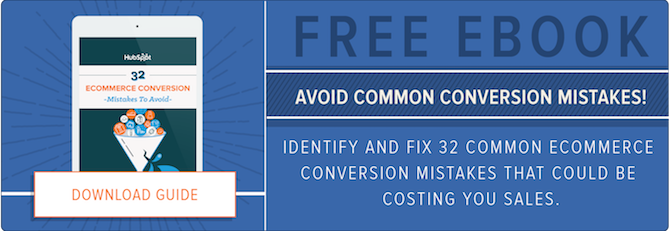 This post originally appeared on the Ecommerce section of Inbound Hub. To read more content like this, subscribe to Ecommerce.
This post originally appeared on the Ecommerce section of Inbound Hub. To read more content like this, subscribe to Ecommerce.
Who doesn’t hate filling out forms?
Hate is a strong word, but sometimes it’s not strong enough. When requiring a contact form to download the goodies you’re offering, you have to think first of the users that will face this form on the other side of the screen. Would the scenario look something like this?
Please enter your name, address, phone number, company name ... also your great-uncle’s cat’s favorite piece of furniture to scratch ...
The potential lead might spew profanities for a while, stub their toe kicking the desk, or threaten to toss the computer out of the window. But the content your site offers is really good. So, they keep going, slogging through multiple form fields to get the prize at the end.
Finally, they succeed, and then there it is: The “Submit” button. “Don’t tell me what to do!” they shout, and then close the window. They’re not alone. Forms using the “Submit” button have a 3 percent lower conversion rate than those that don’t. So how can you get someone to submit a form? The answer is: By using a bit of psychology.
What Should Your Forms Say?
1) Word Choice Matters
The first rule of Form Club: Don’t use the word ‘submit’ when you want someone to submit a form. Studies show that “click here” and “go” buttons score nearly 30% and 25% better, respectively.

2) Length Matters
The second rule of Form Club: Size does matter. The shorter your form, the higher your conversion rate. So leave out your unnecessary fields. Cutting the number of fields may be painful at first, like you’re throwing away valuable information, but that loss will feel like a distant tickle when you see that your conversion rates have risen by up to 120% (true story).

3) Field Choice Matters
The third rule of Form Club: Unless you operate a business that phones every submitter of a form after they fill out said form, either steer away from the phone number field or make the entry optional. You can collect the phone number later during the nurturing process using progressive profiling.

When Can You Ask for More?
Gathering information on your customers is a tricky thing. You don’t want anyone to feel like you’re peeking into their bedroom with a pair of binoculars, right? Still, every bit of information you gather helps you tailor future content, the services you offer, and even the products you sell to meet their needs.
In fact, think of your contact forms as dates. That's the fourth secret. Did you pry for every ounce of information the first time you took a date to dinner? For example ... did you ask how old your date was? If you did, you probably never had a second date. Forms with the “age” field are less likely to convert. Did you ask for his address? Where she works? What her job title is? How much money his company makes yearly? How much he makes every year? Revealing all that information to someone who’s barely an acquaintance is exhausting. And the person who’s asking looks more than a little creepy.
Instead, get the basics to begin with. Next time you go out, ask for a little more. On the third date, you probably have a pretty good grasp on who you’re buying that lobster for. The same applies to your contact forms. Start with name and email address, and then build from there with one or two questions every time that potential customer comes back. In no time, you’ll know everything you need to make your date’s shopping experience the best ever.


 Little Secrets to Contact Forms That Convert [Quick Tip]
Little Secrets to Contact Forms That Convert [Quick Tip]




 Apparently Twitter has switched its web interface from the Helvetica Neue font to Gotham Narrow SSm. Honestly, I barely have any idea what that sentence means, but that is what people who seem to know what they’re talking about were saying yesterday, and judging by the current consternation on Twitter, the change has now gone live for everyone. Also, if I squint at the different fonts…
Apparently Twitter has switched its web interface from the Helvetica Neue font to Gotham Narrow SSm. Honestly, I barely have any idea what that sentence means, but that is what people who seem to know what they’re talking about were saying yesterday, and judging by the current consternation on Twitter, the change has now gone live for everyone. Also, if I squint at the different fonts… 






 This post originally appeared on the
This post originally appeared on the 




